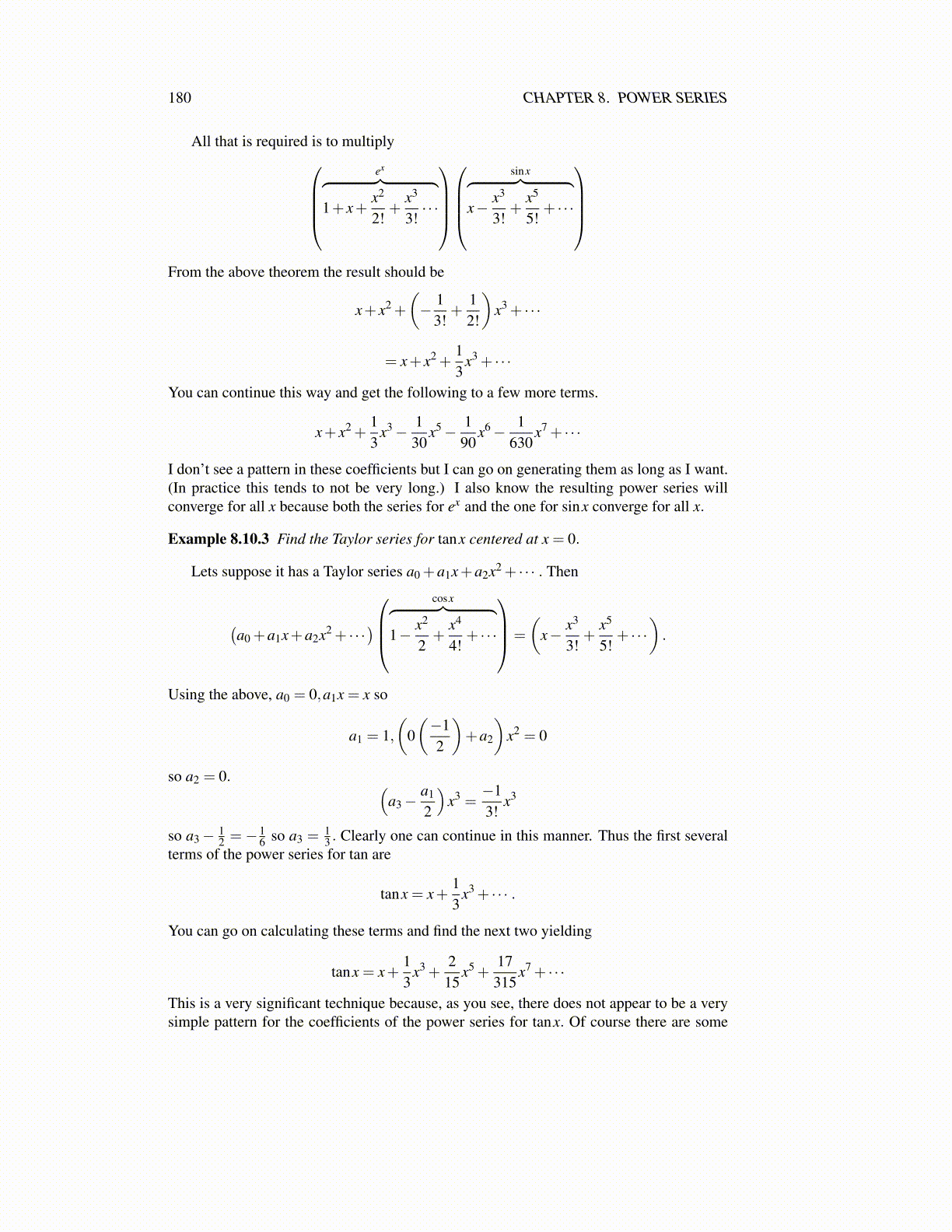
180 CHAPTER 8. POWER SERIES
This is the equation which governs the vibration of a pendulum. Explain why thereexists a power series which gives the solution to the above initial value problem.Multiply the equation by y′ and identify what you have obtained as the derivative ofan interesting quantity which must be constant.
13. Suppose the function ex is defined in terms of a power series, ex ≡ ∑∞k=0
xk
k! . UseTheorem 5.5.6 on Page 96 to show directly the usual law of exponents,
ex+y = exey.
Be sure to check all the hypotheses.
14. Let fn (x)≡( 1
n + x2)1/2
. Show that for all x,
||x|− fn (x)| ≤1√n.
Thus these approximate functions converge uniformly to the function f (x) = |x|.Now show f ′n (0) = 0 for all n and so f ′n (0)→ 0. However, the function f (x) ≡ |x|has no derivative at x = 0. Thus even though fn (x)→ f (x) for all x, you cannot saythat f ′n (0)→ f ′ (0) .
15. Let the functions, fn (x) be given in Problem 14 and consider
g1 (x) = f1 (x) , gn (x) = fn (x)− fn−1 (x) if n > 1.
Show that for all x,∞
∑k=0
gk (x) = |x|
and that g′k (0) = 0 for all k. Therefore, you can’t differentiate the series term by termand get the right answer3.
16. Use the theorem about the binomial series to give a proof of the binomial theorem
(a+b)n =n
∑k=0
(nk
)an−kbk
whenever n is a positive integer.
17. Find the power series for sin(x2)
by plugging in x2 where ever there is an x in thepower series for sinx. How do you know this is the power series for sin
(x2)?
18. Find the first several terms of the power series for sin2 (x) by multiplying the powerseries for sin(x) . Next use the trig. identity, sin2 (x) = 1−cos(2x)
2 and the power seriesfor cos(2x) to find the power series.
19. Find the power series for f (x) = 1√1−x2
.
3How bad can this get? It can be much worse than this. In fact, there are functions which are continuouseverywhere and differentiable nowhere. We typically don’t have names for them but they are there just the same.Every such function can be written as an infinite sum of polynomials which of course have derivatives at everypoint. Thus it is nonsense to differentiate an infinite sum term by term without a theorem of some sort.